6 min read
Should You Repair or Renovate Your Lawn?
By: Shawn Karn, The Grass Expert on May 25, 2017 1:07:41 PM
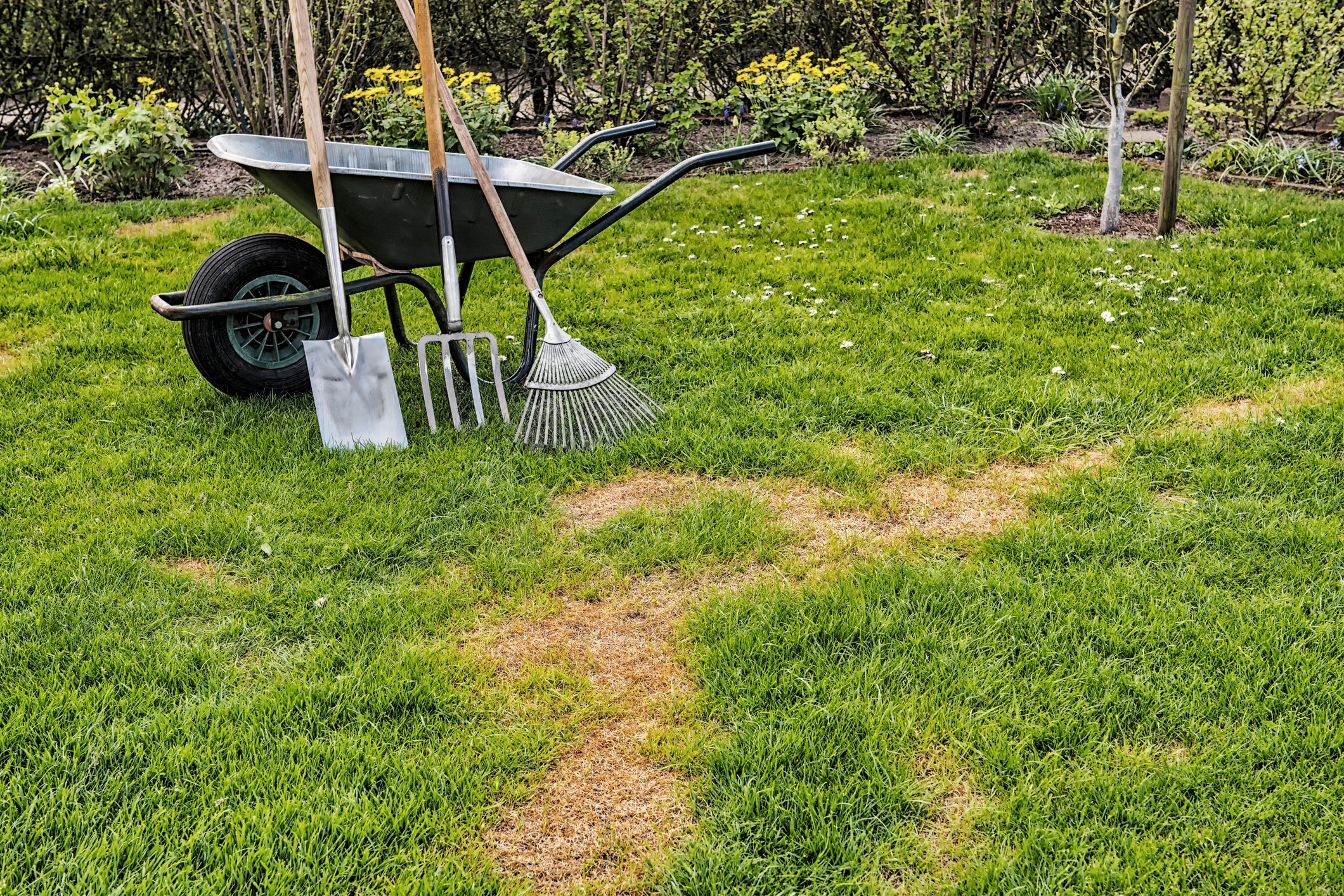
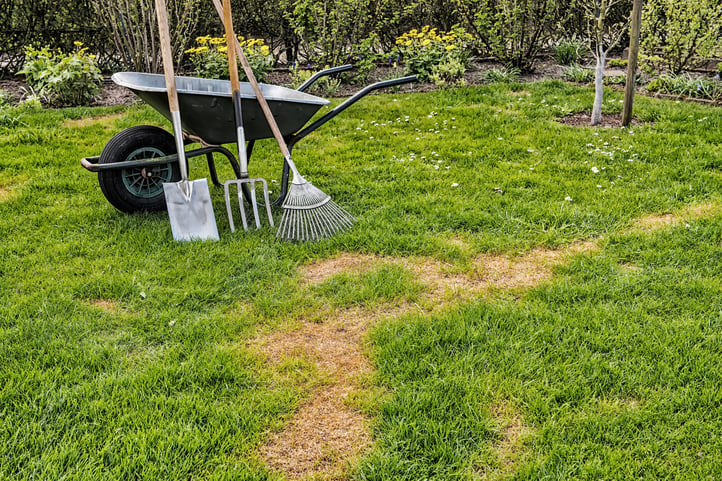
Grass is very resilient. More often than not, lawns can recover on their own as long as stress conditions like disease and insects don't continue for long periods of time.
However, it goes without saying that lawns appreciate a little TLC. A well fertilized, irrigated, and mowed lawn can make a huge difference in how it responds to and recovers from stress.
Having said that, when areas are just not recovering, you might need to look into repairing or renovating your lawn.
Depending on the starting condition and whether you have isolated areas or an entire lawn to address, there are a number of paths you can take on your way to healthy, happy grass.
Lawn Repairs
When you only have small, isolated areas that are damaged and struggling to recover, small repair jobs like seeding will help you get back on the right track.
A good rule of thumb is 25%; if less than a quarter of your lawn is damaged, then there's no need to look into larger renovation projects just yet.
Hand Seeding & Overseeding
For small areas of concern that are no bigger than the size of your fist, hand spot seeding is an effective way to repair bald patches.
For lawns that are thin, weak, or have multiple minor areas of concern, overseeding is an ideal solution. This is best done with a push spreader.
Whether you're spot seeding or overseeding, timing is important. Seeding projects are best done in the Spring or the Fall when air and soil temperatures are not too warm or too cold, and when natural rainfall is common.
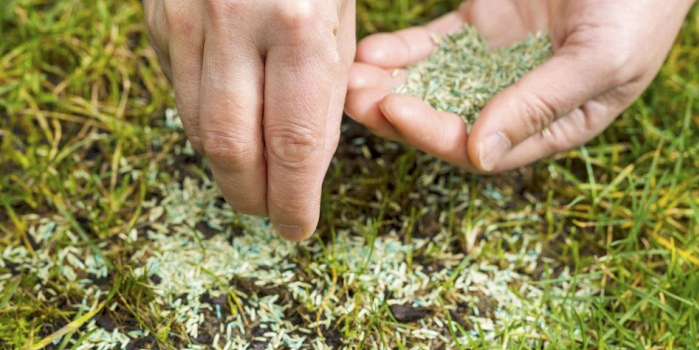
RELATED > How To Fill In Bare Areas Of Your Lawn
Lawn Renovations
Although seeding is a great way to repair your lawn, sometimes it's not that simple. Due to issues like poor topsoil, excessive thatch, or heavy infestations of weeds, insects, or disease, a lawn renovation may be required.
When more than 25% of your lawn requires repair, it's worth considering a lawn renovation. Some of these projects can be costly and time consuming, so talk to an expert before making any decisions.
Spring and Fall are ideal times of the year for a lawn renovation, as warm soil temperatures, cooler weather, and increased precipitation make for great growing conditions and optimal turf establishment.
Depending on the starting condition of your lawn, there are a range of lawn renovation projects to consider. If you're not sure what the underlying issues of your lawn are, it's best to investigate before you renovate. Speak to a lawn care professional for expert advice based on your local climate and individual turf requirements.
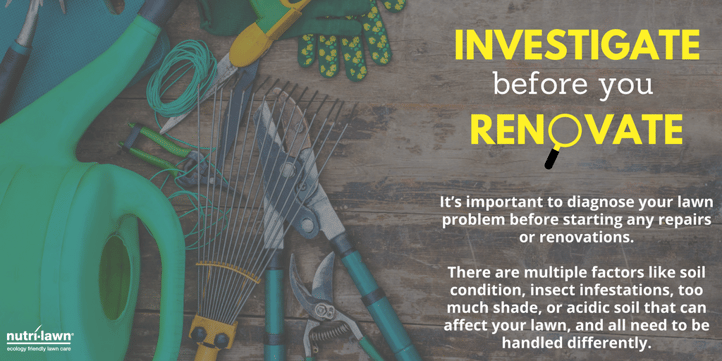
Power Raking
In some cases, lawns begin struggling because of too much thatch in the lawn, which prohibits the soil from accessing important nutrients like air, sun, water, and fertilizers.
RELATED > What's The Deal With Lawn Thatch?
Power Raking is a great way to remove thatch; the dead debris and crust that builds up on a lawn over Winter. The service is especially effective combined with Overseeding, as it opens the lawn surface so that new seed can get better established.
Power Raking generally involves using fixed knife-type blades that slice the thatch instead of ripping it out. Using a dethatching machine, it's set to high so that the blades just skim the surface. Unlike dethatching, power raking doesn't cause extensive damage, so the lawn recovers rapidly and maintains its density.
Core Aeration helps break up excess thatch, reduce soil compaction and open up the soil to improve seed-to-soil contact, so it may be required before Power Raking or instead of Power Raking, if the thatch isn't too out of control. After the lawn has been power raked, a layer of Topdressing should be added. This will act like a mulch and provides a slow feeding of nutrients to the newly germinated seeds.

Dethatching
Dethatching, on the other hand, is a restorative service only recommended for lawns that suffer from an extremely thick thatch layer, more than 3 inches thick.
Using the same machine as power raking, flail type blades set to low reach into the surface of the soil and rip out excessive thatch. After a lawn is dethatched, a large amount of plant material is ripped up, causing extensive damage. The growing points of a grass plant are at the base of the plant, and a lot of the growing points are damaged when a lawn is dethatched.
Since dethatching causes a lot of damage, it creates a lawn that is thin, brown, and beat up. Because of this, it is strongly recommended to combine dethatching with Overseeding or Slitseeding, as well as an application of Topdressing.
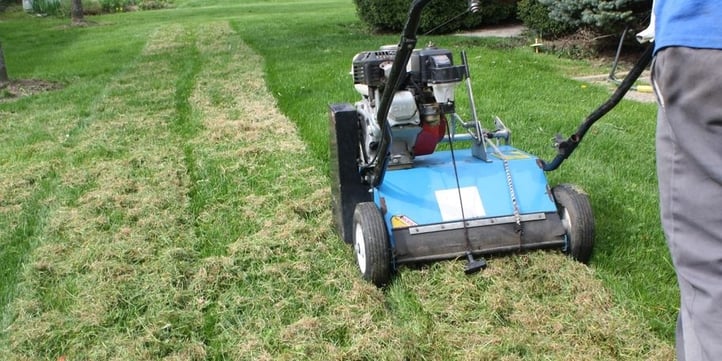
Slitseeding
Slitseeding is an aggressive seeding option performed using a special machine that slices vertical rows into the soil, dropping seed directly into the slits. This provides excellent seed-to-soil contact, which optimizes germination and improves establishment.
Although this process takes much longer than installing new sod, it's substantially less expensive and also very effective.
This lawn in Dieppe, New Brunswick was slitseeded in June 2016. The before photos were taken in early May 2016, prior to the service when the lawn was infested with weeds and grubs, which in turn resulted in large, damaged areas. The after photos were taken in late August 2016, after the new seeds had time to germinate and get established.
/before-after-twitter.png?width=722&height=361&name=before-after-twitter.png)
New Sod Installation
Installing new sod can be an expensive renovation, but if you have a timeframe you want to stick to, it might be your best solution.
Resodding replaces damaged areas instantly, without having to wait weeks or months for new seed to establish. Soil preparation prior to laying new sod is essential to ensure successful establishment. New sod generally takes 2-3 weeks to fully establish before regular lawn care activities can take place again.
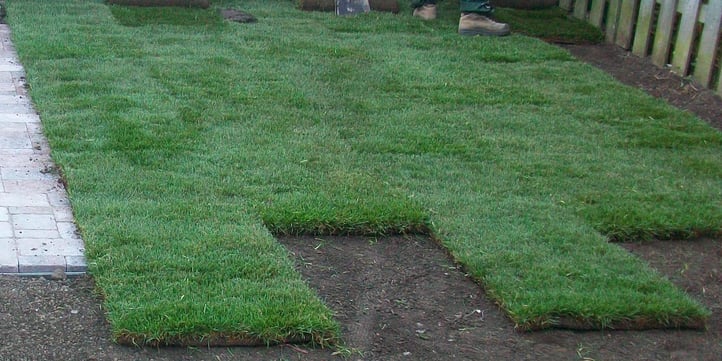
Talk to your local Nutri-Lawn for repair and renovation options in your area.
For more lawn care tips and tricks, follow us on Facebook or Pinterest.



